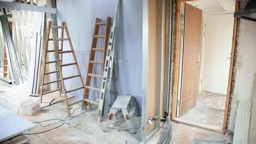
A cabin can be a sanctuary, offering a charming respite from the hustle and bustle of everyday life. Despite its marvelously peaceful atmosphere, there is a constant threat: pests. Recognizing common pests, understanding how to manage them and knowing preventive measures can significantly improve your cabin experience.
Pests to Look Out For
When it comes to cabins, several pests can invade your space, creating discomfort and potential damage. If you want to preserve your cabin far into the future, pests are among your top priorities. Here are your nemeses:
Rodents
Rodents such as mice and rats are notorious cabin infiltrators, especially in rural areas. They often squeeze through tiny openings and are attracted to food sources. Once they invade your cabin, they can chew on wiring, insulation and wood.
Ants
Sugar and protein-loving ants frequently invade cabins in search of food. Carpenter ants are of concern because they tunnel into wood, potentially compromising the structural integrity of your cabin.
Termites
Termites can be the most destructive pests, silently eating away at wooden structures and furniture. They thrive in damp environments, making cabins that are poorly maintained particularly susceptible.
Spiders
While many people view spiders as harmless, some can create a nuisance, and others pose health risks. Spiders often thrive in less frequented areas of cabins, such as attics and crawl spaces.
No matter what pest dares to show its face in your cabin, address the issue as soon as it arises. Pests are one of many home problems you shouldn’t delay solving, as letting them fester can lead to extensive damage or infestation. Being proactive protects your investment and ensures a comfortable living environment for you and your guests.
Hiring a Professional vs. Doing It Yourself
Once you're aware of a pest problem, you’ll need to decide whether to tackle it yourself or hire professionals. Both options have their pros and cons. Many cabin owners often lean towards a do-it-yourself (DIY) approach to save money, and this can be effective with minor infestations if you possess the right tools and knowledge.
To address a pest issue on your own, seal potential entry points. Carefully inspect your cabin for cracks and openings, and then use caulk or hardware cloth to secure these vulnerabilities against intruding pests. Additionally, you can utilize natural repellents to deter unwanted visitors. Ingredients like peppermint oil, vinegar and diatomaceous earth are known for their effectiveness in repelling pests without the use of harsh chemicals. Employing traps can also yield positive results when controlling rodent populations. Sticky traps, snap traps or bait stations can significantly help in managing an infestation in its early stages.
However, if the infestation is more severe, a pest control professional may be your best option. Experts in the field can conduct a thorough inspection of your cabin to identify the extent and type of infestation present. They’re equipped to implement effective treatment plans using more potent solutions that aren’t typically available to the public. Further, pest control professionals often provide ongoing maintenance options, offering plans for regular inspections and preventive treatments to protect your cabin from future infestations.
Ultimately, your decision should be based on the severity of the infestation, your comfort level with pest control measures and your budget.
Preventing Future Infestations
Prevention is the key to avoiding future pest problems, especially as seasons change, particularly when preparing for fall and winter. Here are several strategies to keep your cabin pest-free:
- Clean Regularly: Maintain cleanliness inside and outside your cabin. Store food in airtight containers, throw away garbage promptly and pick up crumbs and spills.
- Properly Store Firewood: Many pests, including termites and wood-boring beetles, can hitch a ride with firewood. Store firewood away from the cabin and at least five feet above the ground.
- Manage Moisture: Moisture is a magnet for many pests, such as termites and rodents. Ensure proper drainage around your cabin’s foundation and consider using a dehumidifier in damp areas.
- Seal Windows and Doors: Inspect windows and doors for gaps or cracks and use weather stripping or caulk to seal any entry points. Doing so is especially important as temperatures drop in the fall and winter.
- Schedule Regular Inspections: Regular pest inspections can help catch any potential issues before they escalate. Hire them seasonally, as pest prevention amps up at the beginning of each season. You’ll need to take a different approach to take care of fall pests, like cockroaches and stink bugs, than you will for spring pests, like ants and termites.
According to the insights from seasonal pest prevention, preparing your cabin for the colder months requires diligence. Temperatures drop, making pest entry and survival more likely, which means vigilance is key to keeping unwanted guests out.
A pest infestation can rapidly transform your serene cabin into a source of stress. By familiarizing yourself with the common pests to be wary of, making well-informed choices regarding pest control and implementing effective preventive measures, you can ensure your cabin remains a sanctuary.










